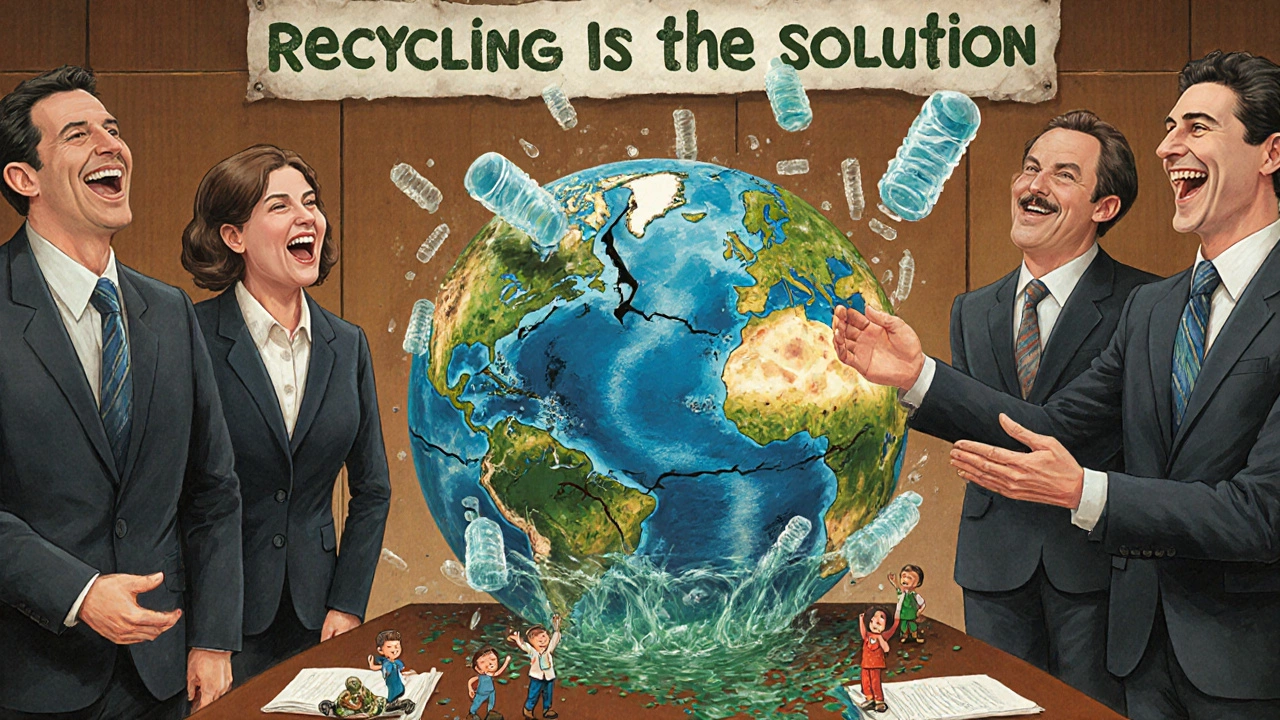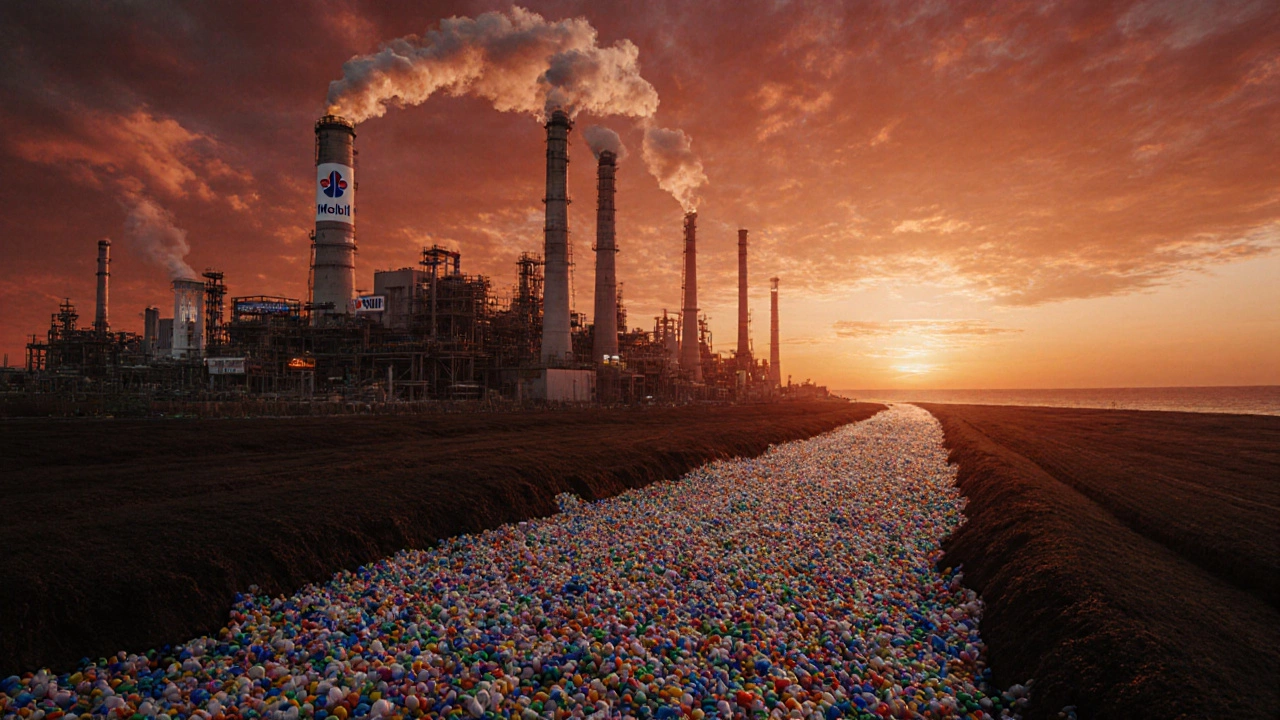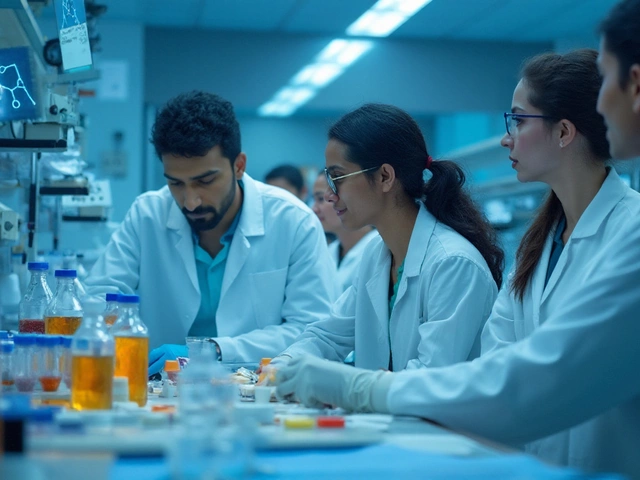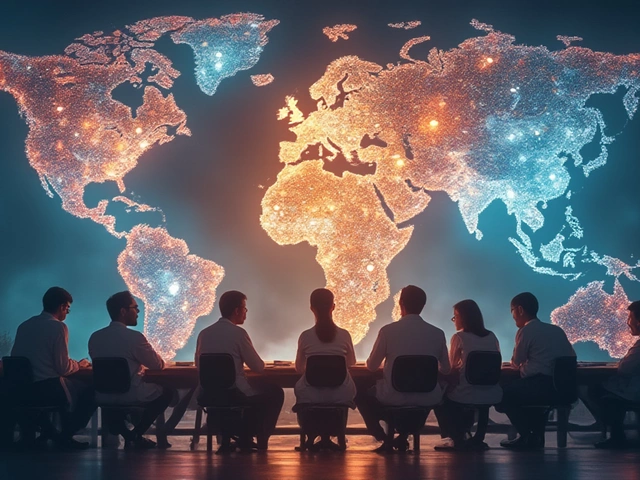Plastic Production Impact Calculator
Based on article data: Only 9% of plastic ever produced has been recycled. This calculator demonstrates the real environmental impact of plastic production.
Every year, over 400 million tons of plastic are produced worldwide. Half of it is designed to be thrown away after one use. And yet, when you walk down any street, see a beach littered with bottles, or scroll through news of oceans choked with bags, the question always comes up: who is to blame for plastic pollution? It’s easy to point at consumers. But the real story? It starts in boardrooms, not trash cans.
The Plastic Production Boom That No One Asked For
In 1950, the world made 2 million tons of plastic. By 2023, that number jumped to 413 million tons. That’s a 20,000% increase in less than 75 years. Who made that happen? Not you. Not me. It was a handful of giant chemical and petrochemical companies - ExxonMobil, Dow, Shell, BASF, Sinopec - that built the entire system to sell more plastic than the planet could handle.
These companies didn’t just make plastic. They spent billions convincing the public that single-use packaging was convenient, safe, and disposable. They funded ads showing happy families using plastic bags, straws, and bottles. They made recycling seem like a magic fix - even though they knew from the start that less than 9% of all plastic ever made has been recycled.
It wasn’t an accident. It was a business plan.
The Recycling Lie
For decades, plastic manufacturers told us recycling was the solution. They put the chasing arrows symbol on every bottle, every container, every wrapper. But internal documents from the 1970s, later leaked by investigative journalists, show these companies knew recycling wouldn’t work at scale.
Why? Because recycling plastic is expensive. It’s messy. It degrades with each cycle. Most plastic types can’t be recycled more than once or twice. And the infrastructure to collect, sort, and process it? It barely exists outside a few wealthy countries.
Instead of fixing the problem, these companies spent millions promoting recycling as a public relations tool. They funded charities, sponsored clean-up events, and even paid scientists to publish papers blaming consumers for not recycling enough. Meanwhile, they kept increasing plastic production - even as global waste piled up.
Who Gets to Decide What Gets Made?
Plastic isn’t just made. It’s designed. And the design choices? They’re made by engineers and product developers working for a few dozen corporations. They choose thin films that can’t be recycled. They mix materials that can’t be separated. They add colors and additives that make recycling impossible.
Think about a coffee cup with a plastic lining. Or a snack bag with metallic layers. Or a toothpaste tube made of multiple plastics fused together. These aren’t accidents. They’re cost-saving decisions. They’re profitable. And they’re all designed by the same companies that sell you the product.
There’s no technical reason these items can’t be made with recyclable or compostable materials. It’s just cheaper to use virgin plastic. And since the companies don’t pay for the cleanup, they have zero incentive to change.

The Global Waste Trade
For years, wealthy nations shipped their plastic waste to countries like Malaysia, Indonesia, and the Philippines. They claimed it was for recycling. In reality, much of it ended up in rivers, landfills, or burned in open pits.
These shipments didn’t happen by accident. They were enabled by trade agreements and weak regulations - all pushed by the same corporations that profit from making plastic. When China banned plastic imports in 2018, it wasn’t because they suddenly cared about the environment. It was because their own landfills were overflowing, and their people were sick from the smoke.
That’s when companies like Nestlé, Coca-Cola, and Procter & Gamble quietly shifted their packaging strategies - not to reduce plastic, but to find new countries to dump it in. Today, over 100 million tons of plastic waste still cross borders annually, mostly from rich to poor nations.
Who Pays the Price?
It’s not the CEOs who live on beaches covered in plastic. It’s the fisherman in the Philippines who finds a plastic bag in his net. It’s the child in Lagos who breathes toxic fumes from a burning dump. It’s the turtle in the Mediterranean that mistakes a plastic bag for jellyfish.
Meanwhile, the top 20 plastic-producing companies generate over $1 trillion in annual revenue. In 2023, ExxonMobil alone spent $3.7 billion on new plastic production facilities. They’re betting the planet will keep absorbing their waste - and that governments will keep letting them.

It’s Not About You
Yes, you can bring your own bag. Yes, you can refuse a straw. But if you’re one person in a city of 500,000, and every supermarket still gives out 20,000 plastic bags a day, your reusable bag won’t change the system.
Real change comes when the people who design the system are forced to change it. That means holding corporations accountable. That means laws that make them pay for the waste they create. That means banning single-use plastics they refuse to redesign.
Some countries are starting to act. The European Union passed the Single-Use Plastics Directive in 2021, forcing companies to cover cleanup costs and design recyclable packaging. Canada banned six types of single-use plastics in 2023. India is pushing for extended producer responsibility laws.
But in the U.S., where the top 10 plastic producers are headquartered, there’s still no federal law requiring them to reduce plastic output. In fact, in 2024, 37 U.S. states introduced bills to block local plastic bans - all backed by industry lobbying.
Who’s Responsible? The Answer Is Simple
Consumers don’t create plastic pollution. They inherit it.
Plastic manufacturers created the problem. They designed it. They sold it. They lied about the solution. And they still profit from it.
Blaming individuals for using plastic is like blaming passengers for a plane crash because they didn’t check the pilot’s license. The pilot - the company - is the one in control.
Until we stop treating plastic pollution as a personal failure and start treating it as a corporate crime, nothing will change. The plastic industry doesn’t need your guilt. It needs your pressure. Your vote. Your protest. Your demand for accountability.
They made the plastic. They can clean it up.
Are bioplastics a real solution to plastic pollution?
Bioplastics are often marketed as eco-friendly, but most aren’t. Many bioplastics still take years to break down and require industrial composting facilities - which barely exist. Even when they do break down, they can release methane in landfills. Only a few types, like PLA made from corn, are truly compostable under strict conditions. Most bioplastics still pollute the same way as traditional plastic. The real fix isn’t swapping one plastic for another - it’s reducing overall production.
Why don’t companies just switch to reusable packaging?
Reusable systems cost more upfront. They require logistics, cleaning stations, and customer behavior changes - things companies don’t want to invest in. Single-use plastic is cheaper, faster, and more profitable. A refillable bottle system might cost a company $0.15 per unit, but a plastic bottle costs $0.03. When the cost of pollution is paid by taxpayers and communities - not corporations - there’s no incentive to switch. Some brands like Loop by TerraCycle are trying, but they’re niche. Without regulation, reusable won’t scale.
Can recycling ever work for plastic?
Recycling can work for some plastics - like PET bottles - but only if they’re collected, sorted, and processed correctly. In reality, most plastic waste is mixed, dirty, or contaminated. Even in countries with good recycling programs, only about 30% of PET bottles are actually recycled. For other types - like LDPE film or multi-layer packaging - recycling is nearly impossible. The industry promoted recycling not because it works, but because it kept people from demanding real change.
What role do governments play in plastic pollution?
Governments have been complicit. For decades, they gave tax breaks to petrochemical companies, subsidized oil and gas used to make plastic, and failed to enforce waste management rules. Some now regulate plastic use, but many still rely on industry lobbying. In the U.S., the American Chemistry Council spent over $20 million in 2023 to fight plastic bans. In places like Nigeria and Vietnam, weak enforcement lets companies dump waste with little consequence. Real progress only happens when governments stop being silent partners.
Are there any plastic companies trying to do the right thing?
A few are making small efforts - like Coca-Cola’s “World Without Waste” pledge or Unilever’s use of recycled content. But these are drops in the ocean. Coca-Cola still produces over 120 billion plastic bottles a year. Unilever’s plastic use rose 15% between 2019 and 2023. These are PR moves, not systemic change. True accountability means reducing total plastic output - not just swapping a few bottles for recycled ones. No major producer has committed to that yet.
What Comes Next?
The plastic industry won’t fix itself. It never has. Change will come only when communities demand it - through protests, lawsuits, voting, and consumer pressure. It’s not about being perfect. It’s about refusing to let corporations off the hook.
Every time you ask a store why they still use plastic wrap, every time you call your local council to demand a producer responsibility law, every time you support a brand that’s actually reducing plastic - you’re not just making a choice. You’re challenging a system.
Who’s to blame? The companies that made the plastic. But who can stop it? You - and millions like you.






